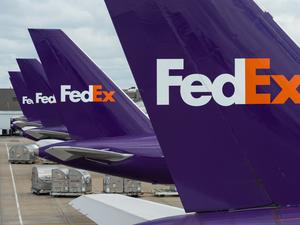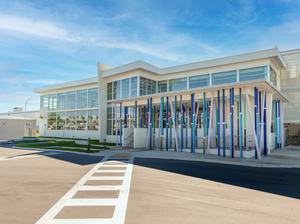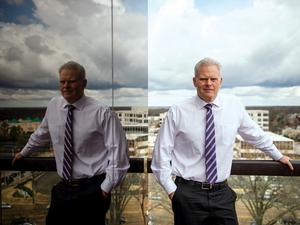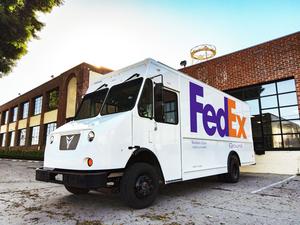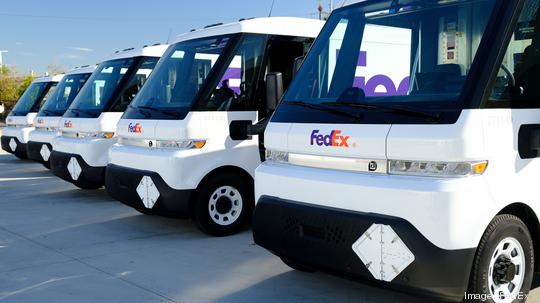
Recently, FedEx took a small step toward completing its large goal of becoming carbon neutral by 2040.
The delivery services giant has received its first electric light commercial vehicles (LCV) from BrightDrop, General Motors’ electric delivery and logistics business. FedEx had announced it was BrightDrop’s first customer in January 2021.
“At FedEx, transforming our pickup and delivery fleet to electric vehicles is integral to achieving our ambitious sustainability goals announced earlier this year,” Mitch Jackson, FedEx’s chief sustainability officer, said in a press release. “This collaborative effort shows how businesses can take action to help usher in a lower-emissions future for all.”
The company has ordered 500 vehicles, and received the first five of them, which will be housed and operated at a FedEx Express facility in Inglewood, California.
Called EV600s, they’re zero-emission vehicles designed to deliver goods and services over long ranges, and have safety and convenience features more common in consumer electric cars. Powered by the Ultium battery system, the EV600 has an estimated range of up to 250 miles on a full charge, more than 600 feet of cargo space, a 3.4-inch-diagonal infotainment screen, front sliding pocket doors, wide cabin walkways, a cargo area security system with motion sensors, and a large cargo bulkhead door that opens automatically.
FedEx’s purchase is part of its wide-ranging sustainability plans, as the company is investing more than $2 billion to become carbon neutral globally by 2040. A large part of this involves vehicle electrification. By 2025, 50% of FedEx Express global PUD (pickup and delivery) vehicle purchases are expected to be electric, with that number rising to 100% by 2030. And the company believes that the widespread electric vehicle adoption will save it money in the long run.
At the Governor’s Conference on Economic and Community Development in August, Richard Smith, FedEx Express regional president of the Americas, said the shift is expected to bring about a 40% reduction in maintenance and fuel costs — and that this percentage could be even higher, given the e-commerce boom.
Why, then, will only 50% of PUD vehicle purchases be electric by 2025?
At the conference, Smith explained that it has to do with infrastructure constraints, related to both manufacturing and battery charging. By 2030, however, FedEx expects the infrastructure will be there to support a 100% purchasing shift.
Already, the company is building charging infrastructure across its network and has 500 charging stations installed throughout California. It’s also working with utility companies to evaluate the capacity needed for electrical grids that support the infrastructure.
